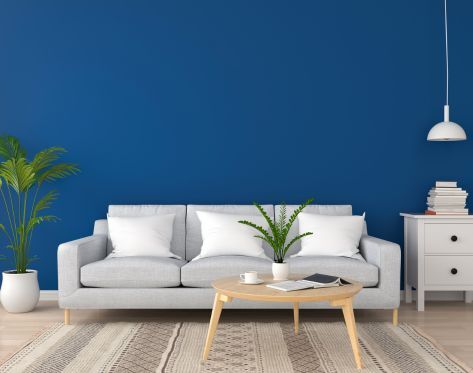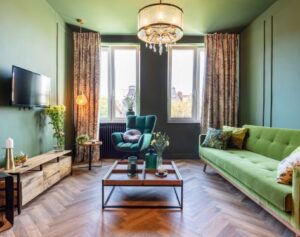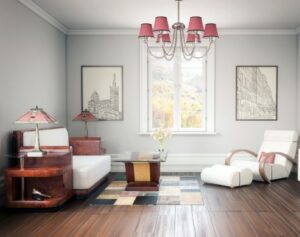Colors play a significant role in interior design, as they have the power to evoke emotions, set the mood, and create a harmonious atmosphere within a space. Selecting the right colors for your interior can transform a room from ordinary to extraordinary. In this blog post, we will explore the art of choosing the right colors for your space, providing insights, tips, and inspiration to help you create a visually captivating and balanced environment.
Understanding Color Psychology:
Color psychology is the study of how colors impact human emotions and behavior. One has to delve into the meanings and associations commonly associated with different colors, such as calmness and tranquility with blues, energy and warmth with yellows, and sophistication and elegance with neutrals. Understanding color psychology will guide you in selecting colors that align with the desired mood and atmosphere for your space.
Assessing Natural Light:
Natural light has a significant influence on how colors appear in a room. One has to discuss the importance of considering the orientation of your space and the intensity of natural light throughout the day. Warm natural light may enhance warm tones, while cool natural light can affect cooler colors. One has to provide tips on how to assess natural light and select colors that harmonize with the lighting conditions in your space.
Considering the Room’s Function:
Different rooms have different purposes, and the choice of colors should align with their intended function. One has to explore color recommendations for various room types, such as calming blues and greens for bedrooms, vibrant and energetic colors for playrooms, and neutral and soothing tones for bathrooms. Understanding the relationship between color and function will help create spaces that support their intended use.
Exploring Color Schemes:
Color schemes involve the selection of multiple colors that work harmoniously together. One has to introduce popular color schemes, such as monochromatic, complementary, analogous, and triadic, and discuss their characteristics and applications. Understanding color schemes will assist you in creating a cohesive and visually pleasing color palette for your space.
Balancing Warm and Cool Tones:
Finding the right balance between warm and cool tones is crucial for creating a harmonious interior. One has to discuss techniques for incorporating warm and cool colors, such as using warm tones as accents against a neutral backdrop, or balancing warm and cool colors within a complementary color scheme. Achieving the right balance will add depth and visual interest to your space.
Testing Samples and Creating Mood Boards:
Before committing to a color scheme, it’s essential to test color samples and visualize how they will look in your space. One has to provide guidance on how to obtain color samples, test them against different
Exploring Color Schemes:
Color schemes involve the selection of multiple colors that work harmoniously together. One has to introduce popular color schemes, such as monochromatic, complementary, analogous, and triadic, and discuss their characteristics and applications. Understanding color schemes will assist you in creating a cohesive and visually pleasing color palette for your space.
Balancing Warm and Cool Tones:
Finding the right balance between warm and cool tones is crucial for creating a harmonious interior. One has to discuss techniques for incorporating warm and cool colors, such as using warm tones as accents against a neutral backdrop, or balancing warm and cool colors within a complementary color scheme. Achieving the right balance will add depth and visual interest to your space.
Testing Samples and Creating Mood Boards:
Before committing to a color scheme, it’s essential to test color samples and visualize how they will look in your space. One has to provide guidance on how to obtain color samples, test them against different lighting conditions, and create mood boards to help you envision the overall look and feel of your chosen colors within your interior.
Embracing Color Trends:
Color trends can provide inspiration and fresh ideas for your interior. One has to explore current color trends and their applications, showcasing how to incorporate trendy colors in a way that maintains timeless appeal. It’s important to balance personal preferences with trends, creating a space that reflects your individuality while staying current.
Conclusion:
Choosing the right colors for your space is a creative and exciting process that can significantly impact the overall look and feel of your interior. By understanding color psychology, assessing natural light, considering the room’s function, exploring color schemes, and achieving a balance between warm and cool tones, you can create a harmonious and visually appealing environment that reflects your personal style and enhances your well-being. Remember, colors have the power to transform spaces—so embrace the art of color selection and let your creativity guide you in designing a vibrant and inviting interior.




